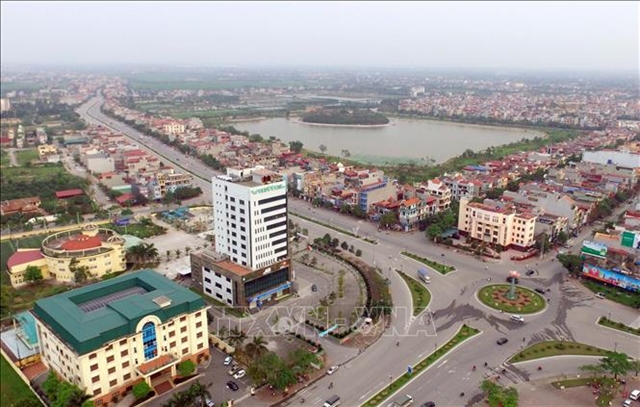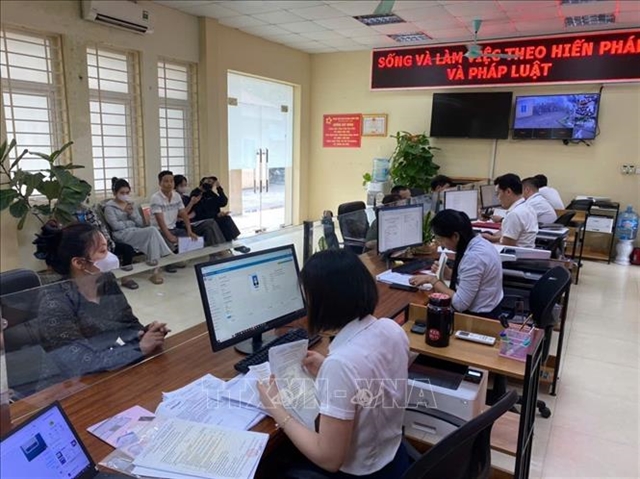 Society
Society


|
| A corner of Hưng Yên Province. Photo: Phạm Kiên/VNA |
HƯNG YÊN - Formed by merging the former Hưng Yên and Thái Bình provinces, the newly established Hưng Yên Province holds significant potential in industry, agriculture, and the marine economy. As a result, there is widespread optimism that the new Hưng Yên will soon become a prosperous, civilised, and liveable locality.
Development driven by three strategic pillars
After the merger, the new Hưng Yên now has a total natural area of over 2,500sq.km (twice the size of the former Hưng Yên) and a population exceeding three million people, comprising 1.2 million from the former Hưng Yên and 1.8 million from Thái Bình.
The merger not only helps save management costs and enhance administrative efficiency but also opens up a larger and more diverse space for development. This creates the foundation for building a vast domestic market, offering a competitive advantage in scale for the manufacturing and service sectors.
Moreover, it will encourage the free flow of capital, labour, and technology, thereby optimising existing resources. The industrial zones of Hưng Yên can directly connect with the abundant workforce from Thái Bình, while Thái Bình’s agricultural products can secure stable outlets through Hưng Yên's logistics network.
Nguyễn Hữu Nghĩa, Secretary of the Hưng Yên Provincial Party Committee, underscores that the merger is not a mere arithmetic combination but a comprehensive restructuring — selecting the best elements from each locality to build a stronger, more vibrant, and more efficient Hưng Yên.
According to the provincial party chief, the province’s development strategy will focus on three core pillars: high-tech industry, green and smart agriculture, and sustainable urbanisation.
Leveraging an integrated master plan recently approved by the Prime Minister, Hưng Yên aims to achieve centrally governed city status by 2035. The urban cluster linking Hưng Yên, Thái Bình, and Hải Dương will serve as the development nucleus. Industrial zones in the former districts of Hưng Yên and Thái Bình will establish a complete and efficient supply chain.
Additionally, Nghĩa highlights the province’s commitment to developing its marine economy and southern coastal areas, positioning the Thái Bình Economic Zone as a new growth engine to drive the province’s future economic development.
Prior to the merger, the former Thái Bình Province invested heavily in coastal infrastructure, including coastal roads, routes linking the Liên Hà Thái Industrial Park to the Sông Hóa Bridge, roads from Thái Bình city to Cồn Vành, and the CT.08 expressway passing through the former Thái Bình and Nam Định provinces. These projects create vital connections to the Red River Delta, Hải Phòng, Quảng Ninh, international airports, and the Móng Cái international border gate in Quảng Ninh.
In the agricultural sector, Nguyễn Đức Kiền, Director of the Provincial Department of Agriculture and Environment, announced plans to develop aquaculture integrated with advanced processing and fisheries logistics, aiming to position Hưng Yên as a key centre for marine agricultural development in the Red River Delta.
High expectations for breakthroughs
The merger of the former Hưng Yên and Thái Bình provinces into the new Hưng Yên Province has sparked widespread enthusiasm among local communities. Across the region, residents express strong confidence in the province’s future, optimistic that the integration of industrial, agricultural, and cultural strengths will unlock new growth opportunities.

|
| Officials at the Public Administrative Service Centre of Mỹ Hào Ward, in the newly established Hưng Yên Province, were carrying out administrative procedures for residents. Photo: Mạnh Khánh/VNA |
Many hope the merger will spur breakthroughs in infrastructure, education, healthcare, and particularly employment opportunities for the younger generation.
In the eyes of many, the merger represents more than just geographic consolidation; it is a transformative opportunity for Hưng Yên to emerge as a prosperous, beautiful, and civilised province, fully embracing the core cultural values of historic Phố Hiến.
Trần Văn Hiếu, from Ngải Dương village, Như Quỳnh commune (former Hưng Yên Province), shared: “I believe this merger will make us stronger. We also feel the leadership’s determination to develop the economy and society while minimising bureaucratic inefficiencies, which will motivate officials to work harder and contribute to our homeland.”
In the coastal commune of Tây Thái Ninh (former Hưng Yên), Vũ Tuấn Minh expressed: “We hope the province invests more in rural infrastructure to facilitate trade and make travel easier for residents.”
Trần Đại Nghĩa, a native of Như Quỳnh commune who is studying at the University of Finance and Business Administration, said: “We hope the new Hưng Yên creates more job opportunities so graduates like me can stay and contribute locally instead of moving to Hà Nội or other provinces.”-VNS




